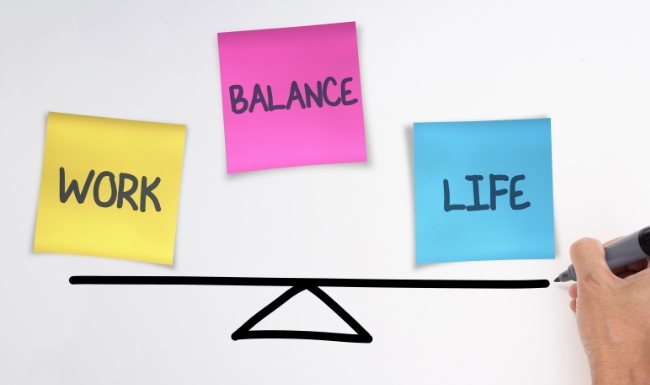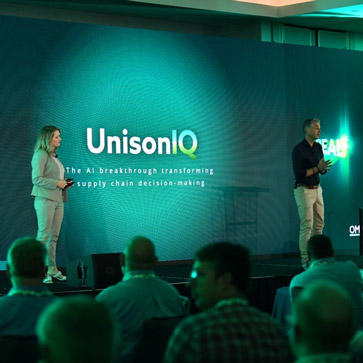
The 5 key elements of successful remote supply chain projects
Jie Wu - June 30, 2021

After more than a year of lockdowns, face masks, and social distancing, I still don’t know what I long for the most: getting back my normal private life or resuming work as it was before the pandemic.
I manage digital supply chain transformation projects and I worried that Covid-19 would muddy the waters of my ongoing projects. How would remote workshops and training sessions work out? Could acceptance tests, dry runs, and go-lives be successful in full lockdown?
After a while in this new reality, it looked as if we and our customers completely reinvented our way of working together. But I discussed this with my colleagues, and we concluded that basically, it was a matter of applying the good practices we’ve been advocating for many years, although we sometimes did it more stringently. And with a fresh touch of ingenuity.
So, I’m happy to share with you what we’ve found to be key to the success of ongoing transformation projects, and why they will still be crucial in the post-Covid-19 era.
1. Stringent and formalized project management apparatus
Normally, some customers insist we work on site with a very large team at critical stages of implementation. My colleague Aditya Karnik, for example, managed a strategic project over 2.5 years at a large chemical company. It was scheduled to be completed in 2020 involving an integrated project team of about 100 people (including the company’s staff). In March 2020, we suddenly faced the fact that almost nobody was allowed on site anymore. Yet postponing the project was not an option, because there were clear targets for reducing inventory with a huge impact on company cash flow buffers. Demand disruptions were inducing additional risks of building excessive stocks.
Blog post

The project continued, but we compensated for the lack of onsite presence by being much stricter on project management. Activities were planned in greater detail, clearly listing prerequisites, responsibilities, actions, and expected results of all meetings, workshops, and other actions. Decision-making became more formal too: signing off the less critical decisions with a nod can work in normal circumstances but engenders more risks and frustrations if you have only virtual meetings. And post-go-live planning was more elaborate, involving small teams focusing on more limited sets of functionalities.
Blog post
And the approach actually works, to the point where several customers are now less insistent about having all implementation people on site. As my colleague, Christophe Ourliac said: “Businesses in Latin America used to require us at least 70% on site, but the positive experience with remote assistance will lead to a more modest onsite presence, probably around 50%.”
2. Increased effort on project documentation
Before the crisis, it was established practice to update project documentation at the end of a project. Working remotely changed that, because formal project documentation and communication became increasingly important for everyone to understand where the project was heading, agree which features would be implemented, and know how they would work in everyday practice.
In one of my projects, we adapted the process that was in place, providing more elaborate status information. Minor project decisions were clearly documented from the onset which allowed us to take away the frustrations of remote business leaders.
We also more systematically deployed the Mantis issue tracking system. Some customer teams had been reluctant to use such a system by the book, but the advantages are now clear: issues were reported more quickly, documented in greater depth, and resolved more rapidly.
3. Organize Covid-19-proof team building initiatives
The lack of close encounters makes it difficult for team members to get to know each other and build a strong team spirit. At OMP, we had to find ways to successfully integrate our large number of newly hired people into the different development, implementation, and advisory teams.
The situation inspired us to be creative: we hosted virtual breakfasts, lunches, and coffee breaks, organized home office quizzes and remote happy hours, and set up lunchtime walks worldwide, allowing people to meet colleagues in small groups, in compliance with local Covid regulations.
We did similar things with project teams. It’s also important to have a solid mix of meeting types, including daily standups and workshops. And don’t underestimate the importance of informal meetings. Christophe Ourliac, who manages projects in Brazil, says it’s also a cultural thing: “For some people, it’s essential to discuss the latest football or soccer game before focusing on the work at hand.”
Blog post
4. Involve everyone, protecting the work-life balance, and building trust
It is especially important to involve everyone in teambuilding. A typical project team is very diverse. You have juniors and seniors, newcomers and experienced people, and people from different cultural backgrounds. Team members can even be thousands of miles away from each other and have different priorities in life. Households may have young families requiring attention at different times of the day, bringing additional challenges.
Blog post
Aditya Karnik said to me the first two weeks of the lockdown felt like a break for everyone, but soon many people found it hard to combine running a family with working from home. So, taking care of the work-life balance was a top priority and will continue to be so when this pandemic is over.
We need to protect the juniors too. Some may have found themselves with a lot of responsibility, with only limited experience. We give them assistance online as much as we can and systematically express our trust in them. That helps them find confidence.

Blog post
5. Have the steerco assume an active and encouraging role
Confidence is never a given. Even experienced project managers need reassurance, especially in these strange times. A steering committee should play a leading role in this.
In one project the steerco suggested falling back on the waterfall methodology because the circumstances would not allow the project team to easily organize SPRINT sessions. In another, they proposed a plan B, which involved compensating for a delayed go-live with a functional capability upgrade.
My colleague Jasper Wouters pointed out that this supportive attitude deserved a big thank you. It makes a big difference for project teams if the steerco takes initiatives that facilitate the work without compromising the end result.
Want to be part of the action? Join our global team as a project manager.

Jie Wu
Senior Team Manager OMP CN
Biography
After more than 10 years at OMP, Jie is as passionate as ever about managing teams and projects in a worldwide context. Guiding the OMP global project team and the customers’ global project team through a range of challenges, she unfailingly drives successful project delivery.





